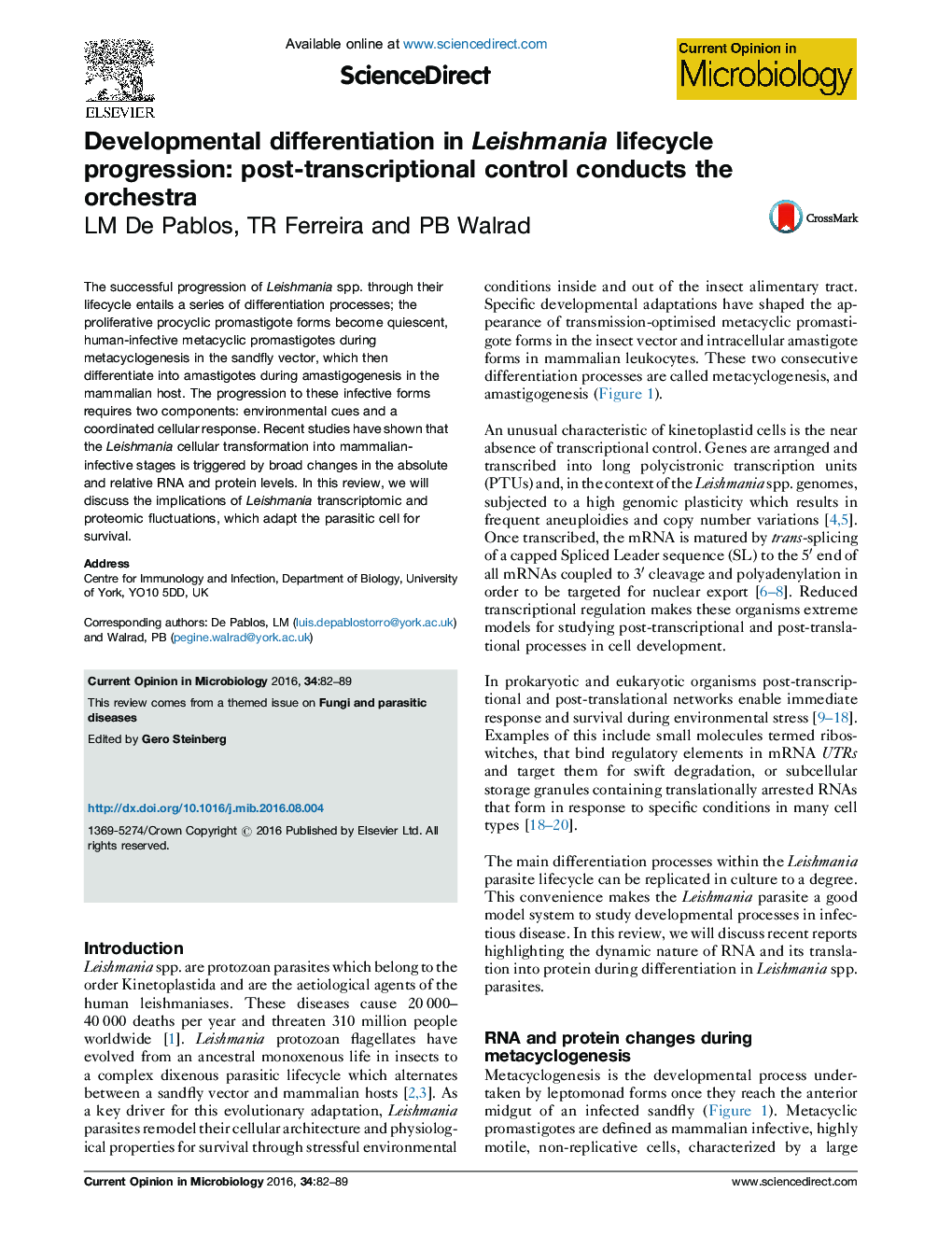| Article ID | Journal | Published Year | Pages | File Type |
|---|---|---|---|---|
| 6131446 | Current Opinion in Microbiology | 2016 | 8 Pages |
Abstract
The successful progression of Leishmania spp. through their lifecycle entails a series of differentiation processes; the proliferative procyclic promastigote forms become quiescent, human-infective metacyclic promastigotes during metacyclogenesis in the sandfly vector, which then differentiate into amastigotes during amastigogenesis in the mammalian host. The progression to these infective forms requires two components: environmental cues and a coordinated cellular response. Recent studies have shown that the Leishmania cellular transformation into mammalian-infective stages is triggered by broad changes in the absolute and relative RNA and protein levels. In this review, we will discuss the implications of Leishmania transcriptomic and proteomic fluctuations, which adapt the parasitic cell for survival.
Related Topics
Life Sciences
Immunology and Microbiology
Microbiology
Authors
LM De Pablos, TR Ferreira, PB Walrad,
